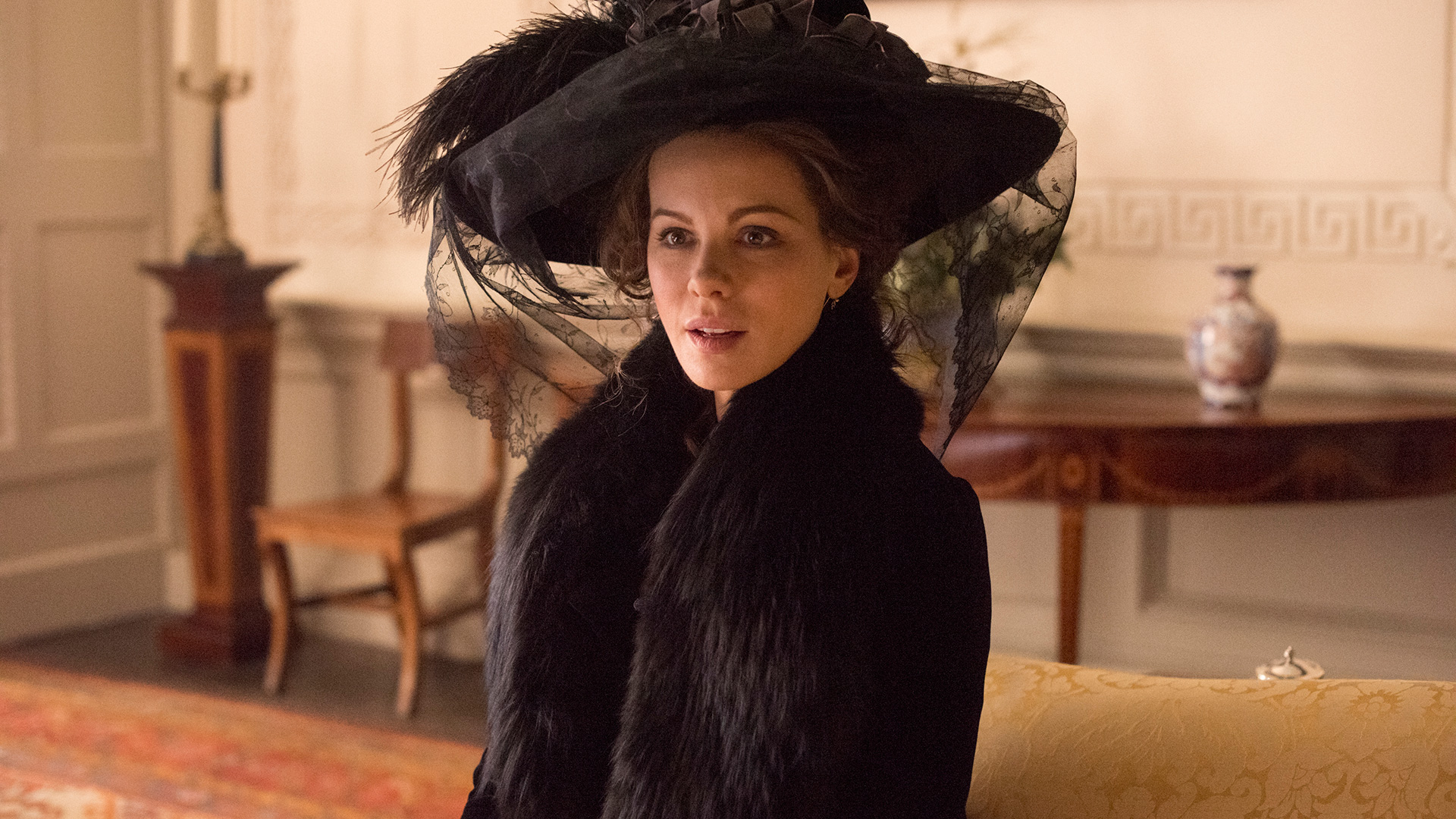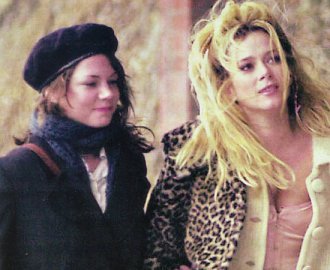This guest post written by Laura Witz is an edited version of an article that originally appeared at Witzster. It is cross-posted with permission.
Whit Stillman’s Love & Friendship follows the narrative of Jane Austen’s novella Lady Susan rather neatly and although many reviews seem to be, often ignorantly, telling us that this is Austen with teeth or some such, what I don’t think they realize is that Austen already has teeth. The film is great, but it is great because it is so faithful to tone.
Austen probably wrote Lady Susan when she was about eighteen (although it wasn’t published until long after her death in 1871), already aware that her hyper intelligence may not stand her in good stead as a woman, but long before the much sadder points in her life, when she was also to fantasize about being able to intellectually and physically subject herself to the whim of the man intended to be her superior (Mansfield Park).
Where in Mansfield Park the Lady Susan character (Mary Crawford) is sidelined and punished, in Lady Susan, she is celebrated. I once read that Lady Susan is a fantasy of female power in a world where, legally speaking, women had none. This power is in the most part manifested in the original text by the fact that the story is told through letters, a medium really only upper class women engaged in, and since the women control the letter form, they do in fact control the boundaries of this reality. Whenever men get involved, their letters are short and stilted and ineffective. I would argue that, to a degree, this reality is also an idealized version of a very real subculture that did exist.
Stillman’s adaptation celebrates this power. Taking the text off the page necessarily removes it from the female form in which it is written and therefore extends the realm of female power. The men in the film are useless and defunct, from the wonderfully silly Sir James Martin (Tom Bennett) (my new crush), to the priggish and apparently clever Reginald DeCourcy (Xavier Samuel) and in particular to the “very handsome” Mr. Manwaring (Lochlann O’Mearáin) who, although he appears in several scenes, has no lines, not one.
As in the original text, this is a battle between two women, Lady Susan Vernon (Kate Beckinsale) and her sister-in-law Catherine Vernon (Emma Greenwell). Catherine has her mother (Jemma Redgrave) in her court and Lady Susan has her friend Alicia (Chloë Sevigny) in hers. Throughout the film, these two vie for power, over Catherine’s brother, Reginald, over Lady Susan’s daughter, Frederica (Morfydd Clark), and arguably over a position as matriarch of the family.
The film is great and so are the actors. Tom Bennett as Sir James Martin made me cry with laughter. And the ending, in particular, is very interesting. The original text finishes with Austen getting slightly bored and making fun of her own narrative form. Stillman’s adaptation sticks very closely to the spirit of the text, ignoring the potentially problematic tone of the final passage, which is arguably written in the voice of Catherine Vernon anyway. And most importantly, this film has steered clear of any attempt to romanticize the story.
As most people who know me know, I have an ax to grind where it comes to Jane Austen and I’ve been grinding it for the better part of the last seven years. Jane Austen is one of the most, if not the most, famous female authors in the world. Yet, over the course of a series of progressively shittier adaptations made by people who in some cases don’t even seem to have read the source text (Joe Wright’s Pride & Prejudice), a great comedian and social satirist has been pigeonholed as a romance writer. Now there’s nothing wrong with romance, I very much enjoy a good rom-com (and quite frequently a very crap one). But the fact is that this genre has been sidelined as one that is trivial and silly ever since Austen herself wrote and idle upper class young women got kicks from reading saucy French novels.
Of course if you actually look at Austen’s works, only Pride and Prejudice can reasonably be described as a romance and that romance is running alongside a lot of social commentary and out and out comedy. In particular, look at Sense and Sensibility, where Elinor marries Edward the bland (a far cry from Hugh Grant / Dan Stevens) and Marianne gets Brandon the old. As a rom-com alone, Sense and Sensibility fails since the major love affair of the text remains unfulfilled.
Dickens wrote romances into every book, but nobody refers to him as a romance writer. The name Allan Woodcourt – or I suppose Woodcourt – hasn’t been adopted as a catch-all for everything women desire and everything that is irritating about the romance genre (Bleak House, in case you’re wondering). Because Dickens doesn’t represent a threat because he is a man and therefore it’s okay for him to be a writer and we don’t need to undermine and diminish him.
So what if we make Austen adaptations that don’t conform to that stereotype? What if we write fan fiction that doesn’t include shit fantasies about pseudo-romances with a misunderstanding of Mr. Darcy? What if someone decides to adapt texts Austen wrote that do not conform to this? What kind of writer do we call her then? And that’s where Love & Friendship comes in. It might not seem groundbreaking that there is yet another period drama out there getting some attention and some critical acclaim, but trust me, this film is rocking my fucking world.
And Whit, if you’re reading this, I have an adaptation of the actual Love & Friendship that we can start work on any day. Although the title might be a problem.
Laura Witz is an editor and writer of plays and stories living and working in the UK. She has written plays that have performed at the Edinburgh Festival Fringe and the Jane Austen Festival in Bath and her articles and stories have been published in a number of institutions and publications, a few of which can be found on her blog. Witz hopes to one day become an aerial clown. You can follow her on Twitter @Charlotte_Prod.











